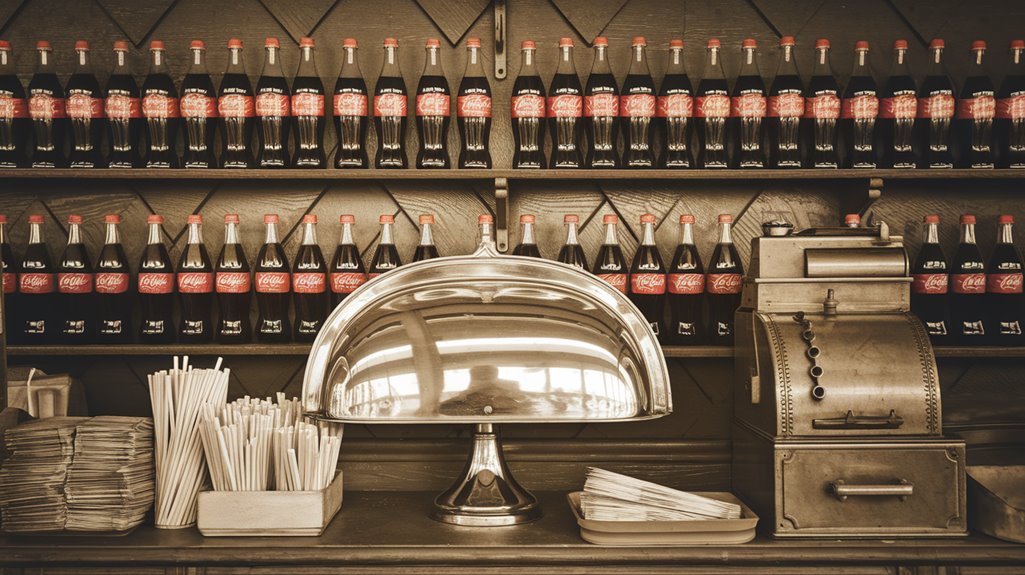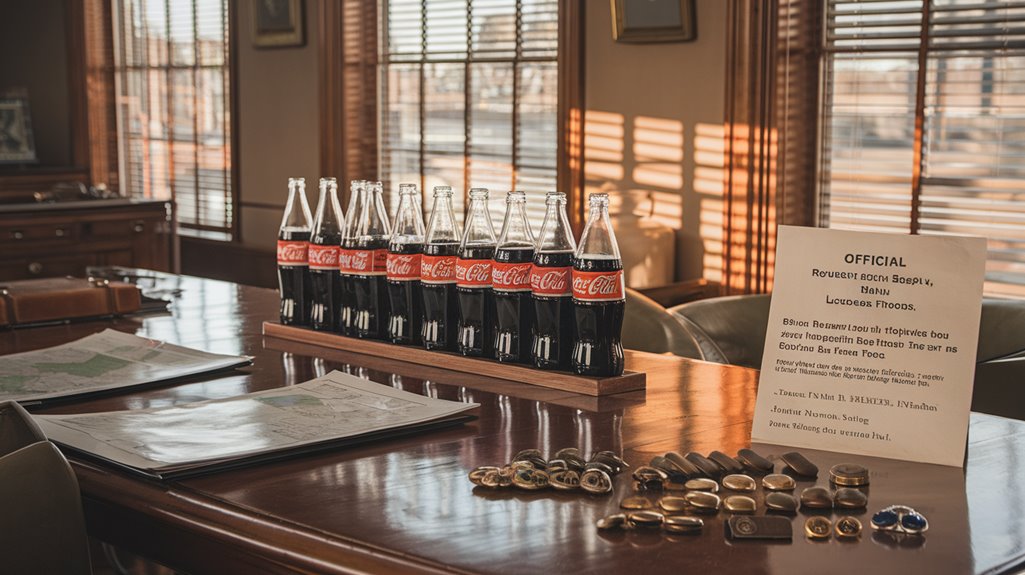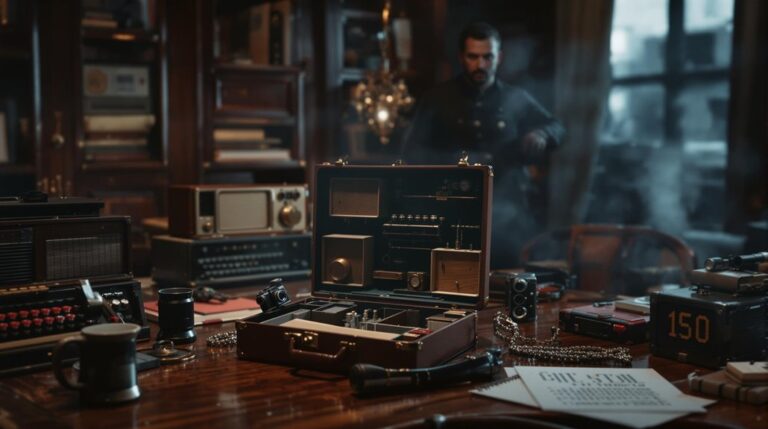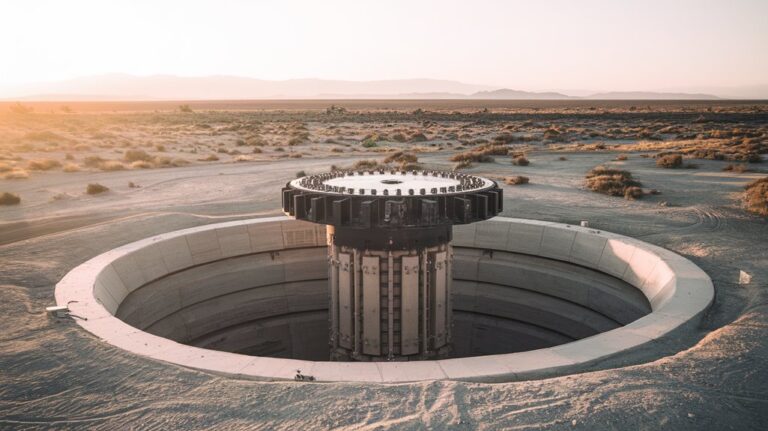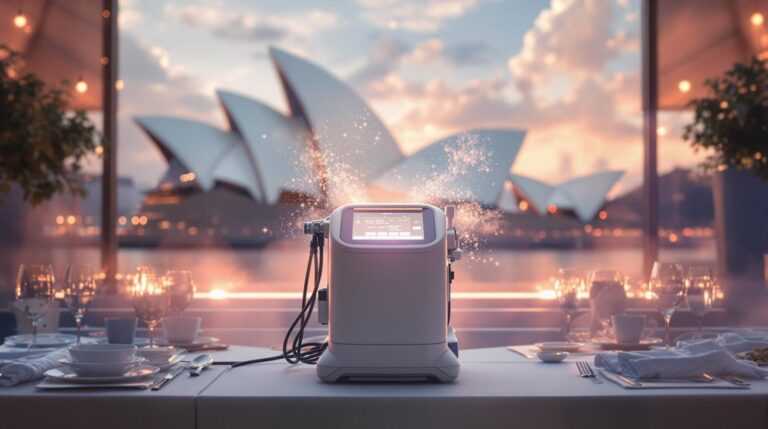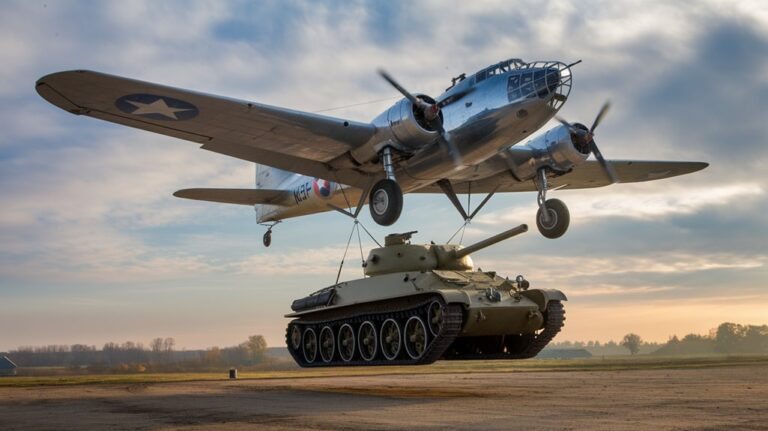WWII’s Impact on Soda: How War Bubbled Up a Bestseller
You might think of WWII as tanks, troops, and tactics, but you'd be surprised to learn how a simple bottle of cola helped shape the outcome of the war and the future of the beverage industry. When Coca-Cola executives promised to deliver their drinks to every soldier for a nickel, they weren't just making a patriotic gesture—they were orchestrating one of the most brilliant business strategies in modern history. What unfolds next changed not only the way Americans drink but how global brands are built.
The Battle for Sugar: Special Wartime Privileges
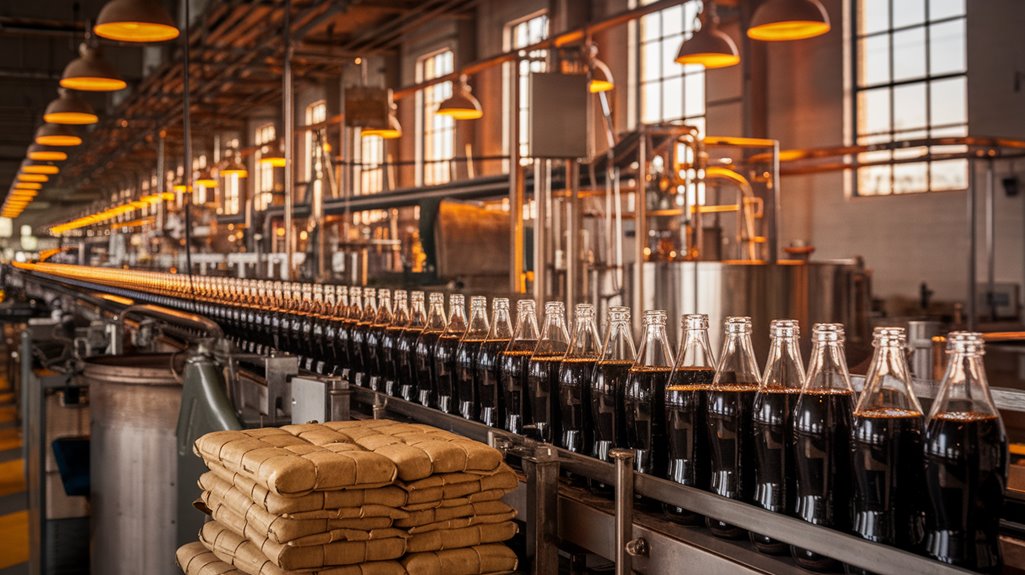
When World War II disrupted America's sugar supply chains in 1942, the government implemented a strict rationing system that would last for five years.
You'd get stamps good for one pound of sugar every two weeks, though this later changed to two pounds monthly. If you were a family, you'd to register and report your existing sugar stock to receive your ration books. During registration, local elementary schools served as the official registration sites.
While sugar rationing created challenges, you could still find alternative sweetener substitutes that weren't rationed, like corn syrup, molasses, and maple syrup.
During this period, your daily sugar intake would've dropped to about 8 teaspoons, and you'd need to get creative with reduced-sugar recipes. Research has shown that children born during this era of restricted sugar consumption had a 35% lower risk of developing type 2 diabetes later in life.
Even restaurants and hospitals faced sugar restrictions, operating on just 50-70% of their pre-war sugar allowances.
Bottling Behind Enemy Lines: Building a Global Network
As World War II intensified, Coca-Cola deployed 248 employees to establish a remarkable network of 64 bottling facilities across the globe.
These "technical observers" revolutionized global logistics by creating bottling innovations that could serve Coca-Cola anywhere, from dense jungles to submarines.
You'll be amazed by these wartime innovations:
- Portable soda dispensers designed specifically for jungle warfare
- Slimmed-down units that could fit through submarine hatches
- 1,100 mobile fountains deployed across the Pacific theater
- Specialized bottling plants on military bases to minimize shipping
This massive operation delivered 16 billion Cokes to 16 million thirsty soldiers during the war.
The strategic placement of bottling facilities near combat zones didn't just quench thirsts – it transformed Coca-Cola into a global phenomenon that introduced millions to their first taste of American culture. The company's wartime success led to Coca-colonization protests in France, where angry mobs overturned trucks and smashed bottles.
General Eisenhower specifically requested these bottling operations to boost troop morale.
Military Brass and Beverage Plans: Command Support
Throughout World War II, military leaders recognized that beverages played a crucial role in maintaining troop morale. From the British Royal Navy's innovative "floating breweries" to the U.S. military's designation of brewing as a critical wartime industry, beverage logistics became a top priority for commanders worldwide. A thorough critical analysis of military records shows the strategic importance placed on drink distribution.
You'll find fascinating examples of military creativity in delivering drinks to troops. The British Army formed a dedicated "Beer for the Troops" committee and even used RAF planes with modified fuel tanks to transport beer. Winston Churchill himself strongly endorsed providing rum and beer to maintain fighting spirit.
The Americans, with Roosevelt's support, secured 15% of brewers' production for soldiers, while maintaining strict 3.2% alcohol limits. Meanwhile, the Soviets took a different approach, strategically distributing vodka to boost confidence before battles.
These varied initiatives highlight how military leaders viewed beverages as indispensable tools for sustaining morale in challenging wartime conditions.
Five Cents of Home: Pricing and Morale Strategy
During World War II, Coca-Cola's unwavering commitment to a five-cent price point became a powerful symbol of home for American troops. This pricing psychology masterfully combined consumer loyalty with patriotic duty, costing the company over $83.2 million in today's dollars but cementing its place in soldiers' hearts. Through a special sugar allowance, Roosevelt ensured Coca-Cola could maintain production while other companies struggled with rationing.
You'll find Coca-Cola's morale-boosting strategy included:
- Partnering with the USO to provide entertainment alongside refreshments
- Following President Woodruff's mandate to reach every American soldier
- Maintaining the same price for both civilians and military personnel
- Publishing "The Red Barrel" magazine to connect with service members
The strategy worked brilliantly. By delivering a taste of home at a familiar price, Coca-Cola transformed from a simple beverage into a symbol of American comfort during wartime, fostering unshakeable brand loyalty that would last for generations. The company deployed 64 portable bottling plants across Europe and the Pacific to ensure troops had access to their favorite drink wherever they served.
Portable Plants and War Zones: Tactical Distribution
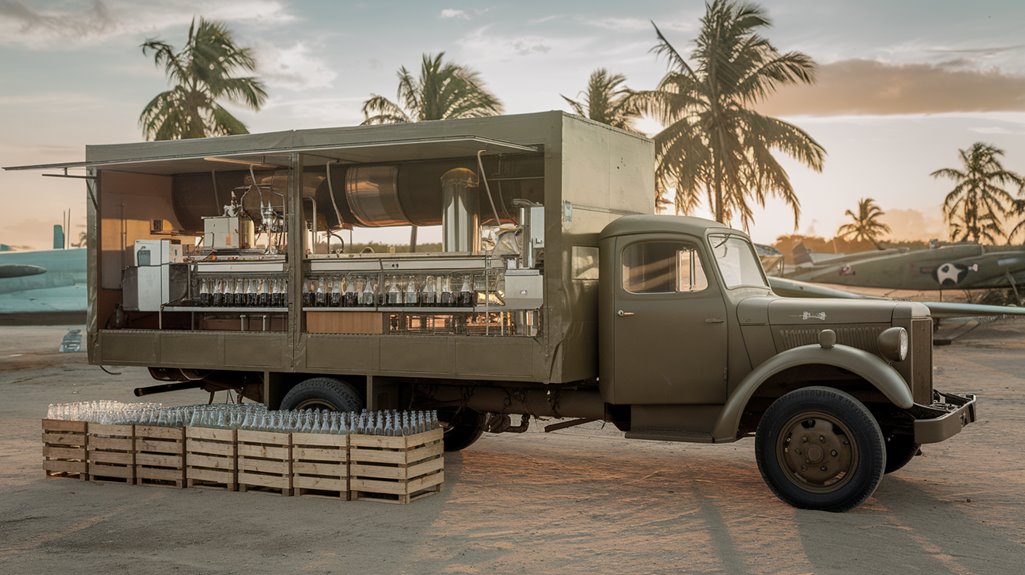
When General Eisenhower requested 10 portable Coca-Cola factories in 1943, he sparked an unprecedented military-industrial initiative that would eventually deploy 64 bottling facilities across global war zones.
President Robert Woodruff demonstrated unwavering commitment by ensuring every GI got Coke.
You'll find that these portable factories revolutionized troop logistics, with Technical Observers (nicknamed "Coca-Cola Colonels") ensuring continuous soda supply to 16 million American soldiers.
The military's investment didn't stop at basic bottling plants.
You'd be amazed by the innovative solutions developed, including jungle fountains equipped with ice-makers and slimmed-down dispensers designed to fit through submarine hatches.
The ambitious project delivered more than 5 billion bottles to service members by war's end.
Over 1,100 of these specialized units were produced, enabling troops to enjoy cold Coca-Cola even in the most remote combat zones.
This tactical distribution network ultimately served 16 billion Cokes throughout the war, reaching everywhere from Polynesian islands to African outposts.
The Aftermath: Post-War Market Domination
As American troops returned home from World War II, they brought with them an unprecedented brand loyalty that shaped the global soft drink market for decades to come.
The market segmentation that followed created distinct territories where Coca-Cola and Pepsi would dominate. American soft drink companies benefited from the industrial devastation in other countries, allowing them to expand globally without significant competition.
 blind taste tests dramatically shifted market dynamics.
blind taste tests dramatically shifted market dynamics.

